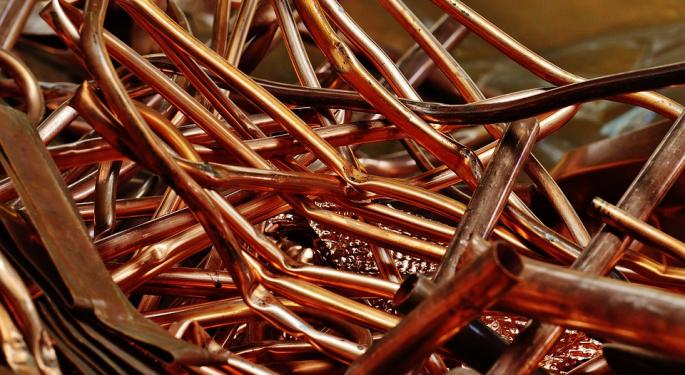
Metals futures markets across the board have pretty much been kneecapped in the back half of 2018, and signs of a reversal in trend are scarce. While none of the metals looks especially poised to surprise investors in the near-term, a strong case could be made that silver and copper have typified the grim trajectories of precious and base metal prices on the approach to 2019.
December contracts for both copper and silver are down about 18 percent from their respective 2018 highs. Both metals plummeted mid-way through the year under similar circumstances. However, the reasons behind their lows — and their opportunities for a bounce — are distinctly tied to their classifications. Below, we’ll dig into the story behind silver and copper futures and see where the potential for a reversal might lie for their respective product class.
Silver
After surging to new highs between June 2017 and June 2018, silver futures crashed hard as this last summer rolled on, not finding support until reaching an ongoing bottom near two-year lows.
This fall is largely a result of an abrupt 6 percent jump in the USD, which started posting new 52-week highs just as other currencies were receding as a result of a tightening global economy. The same pattern happened across the board in precious metals, although not to the degree that silver was hit.
However, the reason silver has struggled to find hardly any upside is that there is little scarcity in the market, a situation shared to some degree with gold and platinum. And, while the above ground surplus in gold is mitigated by the potential of a weakening dollar or another equity surprise fueling demand for the yellow metal, and platinum has only just entered a rare surplus state from which it’s already rebounding thanks to its use in industrial operations, silver just doesn’t have the same appeal or use as its cousins.
It’s unlikely that any of the precious metals will defy expectations with a huge comeback until there are fewer options to weather a sell-off in either equity markets or the dollar. However, silver might be worth keeping an eye on should the dollar continue to fall further, as it’s discounted price might rival the coupon on gold futures if we see another bout of voalitily in the equities markets.
Copper
Similar to the precious metals, futures prices in base materials aluminum and, of course, copper futures fell around June of 2018, although the descent was far less dramatic than in precious markets.
In this instance, it was not so much the strength of the dollar that dragged the metals down. Instead the relative weakness of other global currencies, most of which are in a rising interest rate environment, that prompted the selling of raw materials.
These slow growth signals were further backed up by evidence of diminished demand in traditional emerging markets like India and the tariff-burdened China, all of which pointed to, and eventually produced, lower demand in industrial metals.
Copper is commonly considered a key indicator of global growth trends and, for the foreseeable future, those trends point to a global recessionary period, regardless of what the U.S. economy is doing. This isn’t likely to change in the near-term given the dual anchors of U.S. tariffs affecting a large swath of global economies and a consistent effort among most countries that aren’t the U.S. to reel in some of the excess credit threatening the stability of their economies.
Still, a downturn in the dollar generally lifts all commodity boats, with copper likely to be extra sensitive to any weakness. However, the impact will likely be minor until the global trade picture becomes less contentious and everyone learns to play nicely.
So which metals group might have the better bounce should things get hairy in the U.S. economy? At the moment, precious metals might have the edge seeing as how industrial demand still has yet to contend with the full global impact of the ongoing US-China trade war. However, should the two parties come to an equitable solution before year’s end, look for a potential tightening materials market as trade relations refresh the global market.
